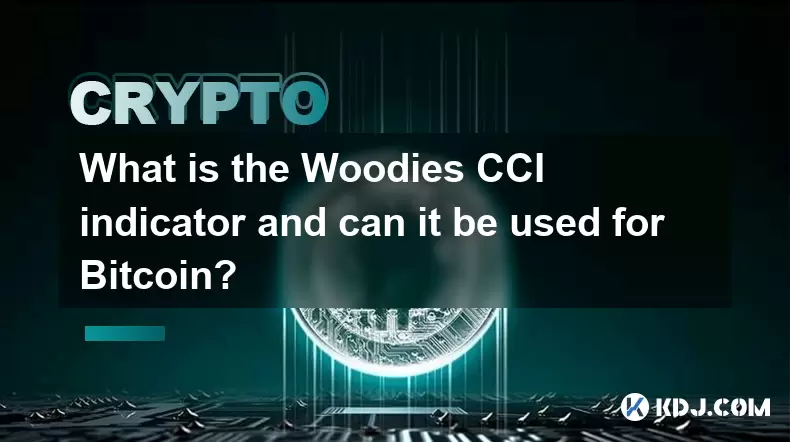-
 Bitcoin
Bitcoin $115200
-2.68% -
 Ethereum
Ethereum $3601
-5.16% -
 XRP
XRP $3.035
-2.96% -
 Tether USDt
Tether USDt $0.9997
-0.04% -
 BNB
BNB $764.5
-5.43% -
 Solana
Solana $168.1
-5.92% -
 USDC
USDC $0.9998
-0.02% -
 Dogecoin
Dogecoin $0.2090
-4.80% -
 TRON
TRON $0.3272
-0.49% -
 Cardano
Cardano $0.7306
-5.00% -
 Hyperliquid
Hyperliquid $39.16
-12.22% -
 Stellar
Stellar $0.3967
-4.96% -
 Sui
Sui $3.566
-5.95% -
 Chainlink
Chainlink $16.55
-6.57% -
 Bitcoin Cash
Bitcoin Cash $552.3
-3.90% -
 Hedera
Hedera $0.2516
-4.69% -
 Avalanche
Avalanche $21.99
-5.75% -
 Toncoin
Toncoin $3.621
-0.28% -
 Ethena USDe
Ethena USDe $1.000
-0.03% -
 UNUS SED LEO
UNUS SED LEO $8.951
0.02% -
 Litecoin
Litecoin $105.9
-3.59% -
 Shiba Inu
Shiba Inu $0.00001232
-5.00% -
 Polkadot
Polkadot $3.640
-5.55% -
 Uniswap
Uniswap $9.048
-7.03% -
 Monero
Monero $301.8
-1.51% -
 Dai
Dai $0.9999
-0.01% -
 Bitget Token
Bitget Token $4.334
-3.66% -
 Pepe
Pepe $0.00001064
-6.17% -
 Cronos
Cronos $0.1367
-5.78% -
 Aave
Aave $259.2
-4.59%
What is a Bitcoin fork? What is the difference between a hard fork and a soft fork?
A Bitcoin fork changes the blockchain's protocol, creating new versions like Bitcoin Cash via hard forks or implementing backward-compatible soft forks like SegWit.
Apr 29, 2025 at 05:28 pm

A Bitcoin fork is a fundamental change to the underlying protocol of the Bitcoin blockchain. When such a change occurs, it can result in the creation of a new version of the blockchain, which may continue to operate alongside the original. Forks can happen for various reasons, including the need to introduce new features, fix bugs, or resolve disagreements within the community about the direction of the cryptocurrency. There are two main types of forks in the Bitcoin ecosystem: hard forks and soft forks.
What is a Hard Fork?
A hard fork is a significant change to the protocol that results in a permanent divergence from the previous version of the blockchain. Once a hard fork occurs, the new version is no longer compatible with the old one, and nodes on the network must upgrade to the new software to continue validating transactions on the new chain. If some nodes do not upgrade, they will continue to operate on the old chain, effectively creating two separate blockchains.
Hard forks often lead to the creation of new cryptocurrencies. A famous example of a hard fork in the Bitcoin ecosystem is the creation of Bitcoin Cash (BCH). In August 2017, a group of developers and miners disagreed with the direction of Bitcoin's development, particularly regarding block size. They initiated a hard fork, resulting in Bitcoin Cash, which had larger block sizes to allow for more transactions per block.
To understand the process of a hard fork, consider the following steps:
- Proposal and Discussion: A proposal for a hard fork is introduced to the community. This can be done through forums, social media, or official channels.
- Code Development: Developers work on implementing the changes to the protocol. This involves writing and testing new code.
- Activation: A specific block height or timestamp is set for the activation of the hard fork. Once this point is reached, the network splits.
- Node Upgrade: Nodes on the network must upgrade to the new software to continue validating transactions on the new chain. Those who do not upgrade remain on the old chain.
- New Cryptocurrency: If the hard fork is successful, a new cryptocurrency is created, which can be traded separately from the original.
What is a Soft Fork?
A soft fork is a change to the protocol that is backward-compatible. Unlike a hard fork, a soft fork does not result in a permanent split of the blockchain. Instead, it introduces changes that are still valid on the old blockchain but may not be recognized by all nodes. Nodes that do not upgrade to the new software can still participate in the network, but they may not be able to take advantage of the new features or rules.
An example of a soft fork in the Bitcoin ecosystem is the introduction of Segregated Witness (SegWit) in 2017. SegWit was a change to the protocol that aimed to increase the capacity of the blockchain and fix transaction malleability issues. It was implemented as a soft fork, meaning that nodes that did not upgrade could still validate transactions, but they would not be able to create SegWit transactions.
The process of implementing a soft fork involves the following steps:
- Proposal and Discussion: Similar to a hard fork, a proposal for a soft fork is introduced to the community for discussion.
- Code Development: Developers work on implementing the changes to the protocol, ensuring that the changes are backward-compatible.
- Activation: A specific block height or timestamp is set for the activation of the soft fork. Once this point is reached, the new rules come into effect.
- Node Upgrade: Nodes on the network are encouraged to upgrade to the new software to take full advantage of the new features. However, nodes that do not upgrade can still participate in the network.
- Monitoring and Adjustment: After the soft fork is activated, the community monitors its effects and makes adjustments if necessary.
Differences Between Hard Forks and Soft Forks
The primary difference between a hard fork and a soft fork lies in their impact on the blockchain and the level of compatibility with existing nodes. Hard forks result in a permanent split of the blockchain, creating two separate versions that are not compatible with each other. This means that nodes must choose which version to support, and those who do not upgrade will continue to operate on the old chain. Hard forks can lead to the creation of new cryptocurrencies, as seen with Bitcoin Cash.
On the other hand, soft forks do not result in a permanent split. They introduce changes that are still valid on the old blockchain, allowing nodes that do not upgrade to continue participating in the network. However, these nodes may not be able to take advantage of the new features or rules. Soft forks are generally considered less disruptive than hard forks, as they do not require all nodes to upgrade to continue functioning.
Examples of Bitcoin Forks
To better understand the concept of forks, let's look at some specific examples within the Bitcoin ecosystem.
- Bitcoin Cash (BCH): As mentioned earlier, Bitcoin Cash was created through a hard fork of the Bitcoin blockchain in August 2017. The primary motivation behind this fork was to increase the block size from 1 MB to 8 MB, allowing for more transactions per block and potentially reducing transaction fees.
- Bitcoin SV (BSV): Bitcoin SV, or Bitcoin Satoshi Vision, was created through a hard fork of Bitcoin Cash in November 2018. The fork was initiated by Craig Wright and Calvin Ayre, who wanted to increase the block size even further to 128 MB and restore what they believed to be the original vision of Bitcoin as outlined by Satoshi Nakamoto.
- Segregated Witness (SegWit): Implemented as a soft fork in August 2017, SegWit aimed to increase the capacity of the Bitcoin blockchain and fix transaction malleability issues. By segregating the witness data from the transaction data, SegWit effectively increased the block size limit to around 4 MB.
Implications of Forks
Forks can have significant implications for the cryptocurrency ecosystem. They can lead to the creation of new cryptocurrencies, which can be traded separately from the original. This can result in increased competition and innovation within the space. However, forks can also lead to confusion and division within the community, as different factions may support different versions of the blockchain.
For users holding the original cryptocurrency, a hard fork can result in them receiving an equivalent amount of the new cryptocurrency. For example, those who held Bitcoin at the time of the Bitcoin Cash hard fork received an equal amount of Bitcoin Cash. This can be seen as a benefit, as users essentially get a new cryptocurrency for free. However, it can also lead to confusion and the need to manage multiple wallets and assets.
Managing Forks
For cryptocurrency users and investors, managing forks can be challenging. Here are some steps to consider when dealing with a fork:
- Stay Informed: Keep up to date with developments in the cryptocurrency community. Follow reputable sources and participate in discussions to understand the implications of any proposed forks.
- Secure Your Assets: Ensure that your cryptocurrencies are stored in secure wallets. If a hard fork is expected, consider moving your assets to a wallet that supports both the original and the new cryptocurrency.
- Understand the Risks: Be aware of the risks associated with forks, including potential loss of funds if you do not properly manage your assets. Always do your research before making any decisions.
- Monitor Exchanges: Check whether the exchanges you use support the new cryptocurrency created by a hard fork. Some exchanges may list the new cryptocurrency, while others may not.
- Backup Your Wallets: Regularly backup your wallets to ensure that you can access your assets on both the original and the new blockchain after a hard fork.
Frequently Asked Questions
Q: Can I spend my cryptocurrencies on both the original and the new blockchain after a hard fork?
A: Yes, after a hard fork, you can spend your cryptocurrencies on both the original and the new blockchain. However, you will need to use separate wallets for each blockchain, as they are no longer compatible with each other.
Q: Are all forks successful in creating a new cryptocurrency?
A: No, not all forks are successful. Some forks may not gain enough support from the community and miners, resulting in the new cryptocurrency failing to gain traction and eventually becoming obsolete.
Q: How can I determine whether a proposed fork is beneficial for the cryptocurrency?
A: Determining the potential benefits of a fork involves understanding the proposed changes and their impact on the cryptocurrency. Consider factors such as the motivation behind the fork, the level of support from the community and developers, and the potential for increased functionality or security. Engage in discussions and read analyses from reputable sources to form an informed opinion.
Q: What happens if I do not upgrade my node during a soft fork?
A: If you do not upgrade your node during a soft fork, you can still participate in the network. However, you may not be able to take advantage of the new features or rules introduced by the soft fork. It is generally recommended to upgrade to ensure full compatibility with the updated protocol.
Disclaimer:info@kdj.com
The information provided is not trading advice. kdj.com does not assume any responsibility for any investments made based on the information provided in this article. Cryptocurrencies are highly volatile and it is highly recommended that you invest with caution after thorough research!
If you believe that the content used on this website infringes your copyright, please contact us immediately (info@kdj.com) and we will delete it promptly.
- Dogecoin's Price Support Under Fire: Can It Fend Off Competitors?
- 2025-08-02 04:30:12
- AI Cloud Mining: How AIXA Miners is Empowering Young Investors
- 2025-08-02 04:30:12
- Crypto Spotlight: Rollblock's Rise, Ripple's Resistance, and What It Means for Your Portfolio
- 2025-08-02 04:50:12
- Crypto's Golden Age: Tether Gold, Institutional BTC, and the Future of Finance
- 2025-08-02 04:50:12
- VeChain, Unilabs, XRP: Decoding August's Crypto Moves
- 2025-08-02 04:55:43
- Bitcoin, Whales, and Profit: Decoding Crypto's Latest Moves
- 2025-08-02 04:55:43
Related knowledge

What is Bitcoin, and how does it function as a digital currency?
Aug 02,2025 at 04:01am
Understanding Bitcoin as a Digital CurrencyBitcoin is a decentralized digital currency that operates without the need for a central authority such as ...

What is the significance of the 21-week EMA in a Bitcoin bull market?
Jul 10,2025 at 06:56pm
Understanding the 21-Week EMA in Cryptocurrency AnalysisThe 21-week Exponential Moving Average (EMA) is a technical indicator widely used by traders a...

How to identify a volatility contraction pattern on Bitcoin using indicators?
Jul 07,2025 at 07:28am
What is a Volatility Contraction Pattern in Bitcoin Trading?A volatility contraction pattern refers to a phase where the price movement of an asset, s...

Do indicators work better on a logarithmic or linear scale for Bitcoin's long-term chart?
Jul 08,2025 at 01:42pm
Understanding Chart Scales in Cryptocurrency TradingIn cryptocurrency trading, particularly for analyzing Bitcoin's long-term trends, chart scales pla...

What is the Woodies CCI indicator and can it be used for Bitcoin?
Jul 04,2025 at 05:14pm
Understanding the Woodies CCI IndicatorThe Woodies CCI indicator is a variation of the traditional Commodity Channel Index (CCI), which was originally...

How to use indicators to trade the opening range breakout for Bitcoin CME futures?
Jul 05,2025 at 07:35pm
What Is the Opening Range Breakout Strategy?The opening range breakout (ORB) strategy is a popular trading technique used in both traditional markets ...

What is Bitcoin, and how does it function as a digital currency?
Aug 02,2025 at 04:01am
Understanding Bitcoin as a Digital CurrencyBitcoin is a decentralized digital currency that operates without the need for a central authority such as ...

What is the significance of the 21-week EMA in a Bitcoin bull market?
Jul 10,2025 at 06:56pm
Understanding the 21-Week EMA in Cryptocurrency AnalysisThe 21-week Exponential Moving Average (EMA) is a technical indicator widely used by traders a...

How to identify a volatility contraction pattern on Bitcoin using indicators?
Jul 07,2025 at 07:28am
What is a Volatility Contraction Pattern in Bitcoin Trading?A volatility contraction pattern refers to a phase where the price movement of an asset, s...

Do indicators work better on a logarithmic or linear scale for Bitcoin's long-term chart?
Jul 08,2025 at 01:42pm
Understanding Chart Scales in Cryptocurrency TradingIn cryptocurrency trading, particularly for analyzing Bitcoin's long-term trends, chart scales pla...

What is the Woodies CCI indicator and can it be used for Bitcoin?
Jul 04,2025 at 05:14pm
Understanding the Woodies CCI IndicatorThe Woodies CCI indicator is a variation of the traditional Commodity Channel Index (CCI), which was originally...

How to use indicators to trade the opening range breakout for Bitcoin CME futures?
Jul 05,2025 at 07:35pm
What Is the Opening Range Breakout Strategy?The opening range breakout (ORB) strategy is a popular trading technique used in both traditional markets ...
See all articles

























































































